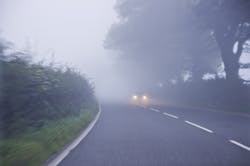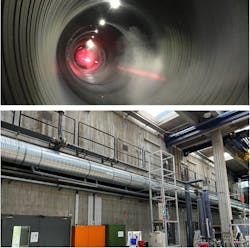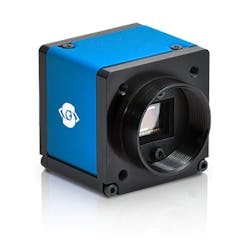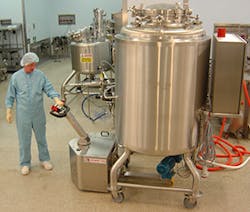Cameras Test Holographic Imaging to Improve Foggy Conditions for Drivers
Fog reduces driver visibility, limits contrast, and distorts perceptions, leading to an estimated 38,700 car accidents annually in the United States. Besides human drivers, fog also hampers the ability of autonomously-driven vehicles to see on the road.
Scientists at the University of Stuttgart have conducted a large-scale experiment using SVS-Vistek cameras to investigate the potential of using holographic imaging in the reliable environmental perception of foggy conditions. They compared single-shot off-axis digital holography to conventional imaging with coherent illumination to show that holographic imaging requires 30 times less illumination power for the same imaging range.
To conduct their experiments, the researchers created an off-axis holographic setup in an image plane configuration mimicking a car on a foggy road. As a light source, a continuous wave laser with an optical power output of up to 4W illuminated a 27-meter-long metal tube filled with ultrasonically generated fog. A large variety of objects of different sizes were placed on one end of the tube.
Light reflected from these objects was collected by the lens, imaging it onto an SVS-Vistek eco655MVGE camera in 8-bit mode. The camera was set at a resolution of 2448 x 2050 pixels with a pixel size of 3.45 μm. Fog density was continuously monitored by measuring the beam attenuation of a separate 780 nm diode laser with a power meter in one-way propagation.
Once the image data was compiled, the scientists compared both techniques at a value that corresponds to the limit where the object becomes visible to human perception in the fog.
Besides using 30% less power, an important finding is that, in contrast to conventional imaging, holographic imaging is immune to an increase in detection noise. This suggests that as the amount of stray light hitting a detector increases, holographic imaging will still perform well. Researchers believe the dimensions and the scattering media used in their experiments are very close to the conditions in real-world autonomous driving. This underscores the utility of holographic imaging as a new sensor concept in automotive engineering.
In ongoing research projects, scientists plan to apply deep learning to extract object information from noisy holograms. Deep neural networks have already been proven to successfully recognize objects partly obscured by fog.
Learn more at www.svs-vistek.com.


